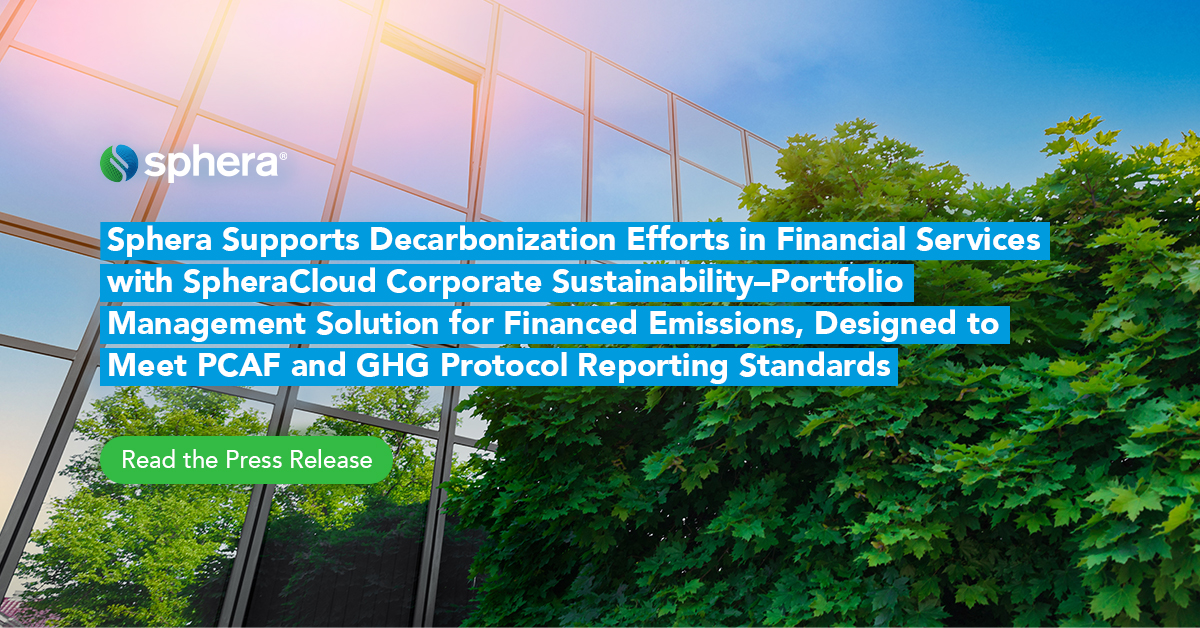
Companies across the globe are setting targets to reach net-zero greenhouse gas (GHG) emissions by 2050. Given its scope and influence, the financial industry has an important role to play in the transition to a net-zero economy. Financial institutions (FIs) can help build a greener economy by directing investments and lending toward more sustainable businesses and projects.
For FIs, the majority of their emissions impact comes from their portfolio emissions—the emissions that stem from their lending and investing activities. According to a CDP report that analyzed data from 332 FIs, the emissions that are associated with global financial institutions’ portfolios are on average “700x larger than direct emissions, per organization reporting financed emissions.” Because of this, there is growing pressure on FIs to measure and report them.
For example, the European Central Bank (ECB) expects FIs to disclose their portfolio emissions, as the organization explained in its Guide on Climate-Related and Environmental Risks, published in November 2020. In April of this year, the ECB published its third review of European bank disclosures of climate-related and environmental risks, which found that the FIs assessed were not reporting their emissions adequately.
To accelerate progress toward net zero and meet reporting expectations, FIs will need to accurately quantify the emissions associated with their portfolios. The companies that FIs lend to and invest in must also reduce their direct emissions or risk losing access to capital. But, for both FIs and the companies they invest in, decarbonizing is easier said than done. For FIs, having access to quality data is essential to successfully quantify and reduce portfolio emissions. However, FIs are often working with data that is either low quality, or the data they need may be missing entirely.
Additionally, when quantifying financed emissions, FIs must calculate many data points and determine which methodology to use for each asset class in order to ensure accuracy. While high-quality data is essential to a successful reporting program, FIs can start with the data they have and work with a software solution to collect and manage the information they need to report quickly and accurately.
To help FIs accurately assess, calculate and report their portfolio emissions using Partnership for Carbon Accounting Financials (PCAF) and GHG Protocol standards, we launched our SpheraCloud Corporate Sustainability–Portfolio Management solution in June. The software allows FIs to measure and report their portfolio emissions in a standardized, transparent and credible manner.
Powered by deep industry knowledge and standards, the SpheraCloud Corporate Sustainability–Portfolio Management solution allows FIs to improve data quality, assess the emissions footprint of a portfolio’s investment and lending activities and make progress toward decarbonization.
We can’t make significant progress toward net zero without addressing Scope 3 GHG emissions. To reach net zero and meet growing reporting expectations, FIs must determine the climate risks associated with their portfolios, measure the emissions tied to their lending and investment activities, identify hotspots and promote decarbonization within their portfolios. For the companies that FIs invest in, decarbonization will be key to securing financing in the long term.
Reducing financed emissions is one of the most important actions financial institutions can take to accelerate decarbonization. We’re proud to help companies identify and manage the climate-related risks and opportunities related to financial service portfolio management. We used expert guidance provided by Blackstone to develop the SpheraCloud Corporate Sustainability–Portfolio Management solution, and we’re working with PwC to leverage the solution for FIs. With the right data, software and expertise, FIs can measure and reduce portfolio emissions and do their part to build a net-zero economy and a more sustainable future.
–Paul
Learn more about Paul Marushka.
How to Quantify and Reduce Financed Emissions


